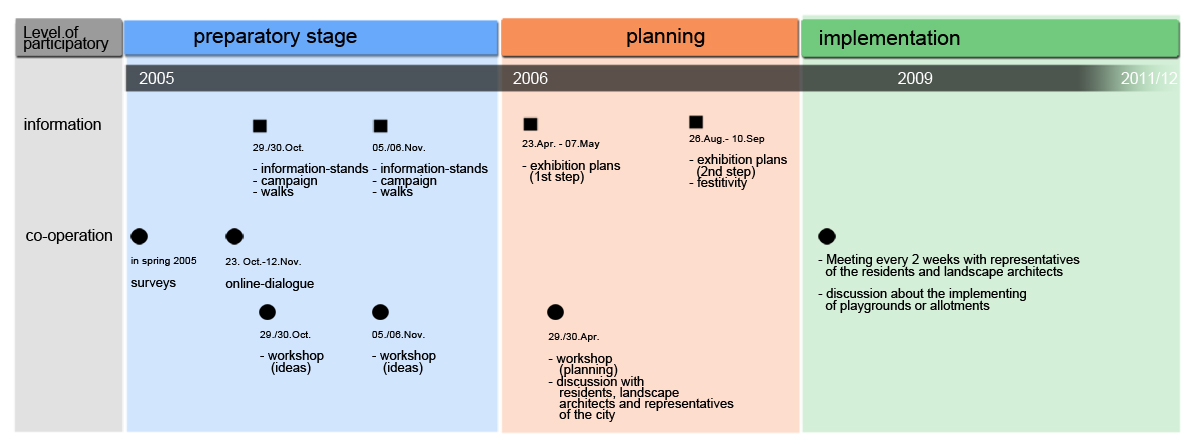Gleisdreieck (Railway Triangle) Berlin, Germany
by Christian
back to Project Biography List
Rationale: Why is this case interesting?
The area “Gleisdreieck”, altogether about 42ha large, is the last inner-city green space area to develop in Berlin downtown. The competition on the area “Gleisdreieck” was arranged as an experiment and prototype to apply both a high challenging, innovative design and the agreement with the interested public through the close involvement.
Author's personal background
Bachelor of Science in Landscape Architecture in 2008 at Beuth Hochschule für Technik, Berlin. Since Oct. 2009 studying International Master of Landscape Architecture at Nürtingen-Geislingen University.
Process Biography Scheme
Who initiated the project and why?
The area, located in Berlin downtown, in the south of Potsdamer Place, was railway property over hundred of years until the 80s and became fallow then. After the reunification of East and West Germany, it was considered to use the area for the german state horticultural show, but then it was used as the central logistic place (until 2004) for the construction of the buildings on Potsdamer Place, the biggest construction site in Europe at that time.
After finishing the construction work on Potsdamer Place the area was a place that through the years of inaccessibility became perceived by the population as a no man's land, rank growthed open field or fallow.
The city-state of Berlin (Senate Department for City Development) initiated the open international competition (in 2 steps) to create a park from the history of the place, where the historical references should be taken up and incorporated into a new utilization concept as well as to amand the social structures in this area.
When was public participation most intensive?
Which participation tools have been applied?
On which level of participation?
Which stakeholders have been involved?
Have there been any festivities in order to involve the public?
Who made the major decisions and when?
Image Gallery
- Yourimage.jpg
your image text
- Yourimage.jpg
your image text
- Yourimage.jpg
your image text
- Yourimage.jpg
your image text
- Yourimage.jpg
your image text
- Yourimage.jpg
your image text
References
back to Project Biography List

